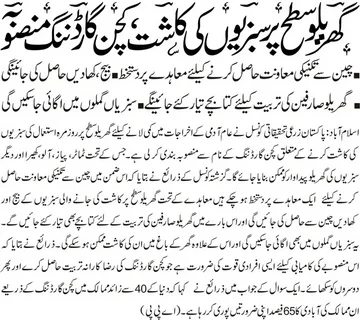Sahafat, a term that embodies the essence of journalism, plays a crucial role in shaping public opinion and disseminating information. In an era dominated by rapid technological advancements and an overwhelming influx of information, the principles and practices of sahafat remain vital. This article explores the multifaceted world of sahafat, its evolution, significance, various types, essential skills, challenges, and future prospects.
What is Sahafat?
Sahafat refers to the art and science of journalism. It encompasses the processes of gathering, assessing, creating, and presenting news and information. The term is derived from Arabic, highlighting its historical roots and the rich tradition of storytelling and information dissemination in many cultures.
Importance of Sahafat
- Information Dissemination: Sahafat ensures that the public is informed about current events, issues, and developments.
- Accountability: Journalists play a watchdog role, holding those in power accountable for their actions.
- Cultural Reflection: Sahafat serves as a mirror to society by reflecting its values, norms, and challenges.
The Evolution of Sahafat
The history of sahafat traces back centuries, evolving through various phases:
- Ancient Civilizations: In ancient times, storytelling was the primary means of sharing information.
- The Printing Press: The invention of the printing press in the 15th century revolutionized sahafat, making information more accessible.
- The Digital Age: The rise of the internet has transformed how news is produced and consumed, leading to the emergence of digital journalism.
Key Milestones
- First Newspapers: The earliest newspapers emerged in the 17th century, marking a significant shift in information sharing.
- Radio and Television: The 20th century saw the advent of broadcast journalism, which brought news into homes worldwide.
- Online Journalism: The 21st century has seen a significant shift towards online platforms, with social media becoming a powerful tool for news dissemination.
The Role of Sahafat in Society
Sahafat serves several crucial functions in society:
- Educating the Public: It provides citizens with the information they need to make informed decisions.
- Promoting Democracy: By informing the public and encouraging dialogue, sahafat contributes to a functioning democracy.
- Fostering Community: Local journalism helps build a sense of community by highlighting local issues and events.
Types of Sahafat
Sahafat can be categorized into various types based on the medium of delivery:
5.1 Print Journalism
Print journalism includes newspapers, magazines, and journals. Despite the rise of digital media, print continues to hold significance for in-depth reporting and analysis.
Features of Print Journalism
- Tangible Format: Readers can physically hold and read printed materials.
- In-Depth Analysis: Print articles often provide more comprehensive coverage of topics.
5.2 Broadcast Journalism
Broadcast journalism refers to news delivered via television and radio. It is known for its immediacy and ability to reach a wide audience quickly.
Characteristics of Broadcast Journalism
- Visual and Auditory Elements: Combines sound and visuals to engage audiences more effectively.
- Timeliness: News is often reported in real-time, making it a preferred choice for breaking news.
5.3 Digital Journalism
Digital journalism encompasses news published on online platforms, including websites, blogs, and social media. It has revolutionized how news is consumed and shared.
Advantages of Digital Journalism
- Accessibility: News is available 24/7, reaching a global audience instantly.
- Interactivity: Readers can engage with content through comments, shares, and discussions.
Skills Required for Sahafat
To excel in sahafat, several key skills are essential:
- Research Skills: Journalists must be able to gather accurate information from reliable sources.
- Writing Skills: Clear and concise writing is crucial for effective communication.
- Critical Thinking: Analyzing information critically helps journalists present balanced viewpoints.
- Adaptability: The media landscape is constantly changing; journalists must adapt to new technologies and trends.
- Ethical Judgment: Upholding ethical standards is vital to maintain credibility and trust.
Challenges Faced in Sahafat
Despite its importance, sahafat faces numerous challenges:
- Misinformation: The spread of false information undermines trust in journalism.
- Economic Pressures: Many news organizations struggle financially, leading to cutbacks in investigative reporting.
- Censorship: In some regions, journalists face censorship and threats, hindering their ability to report freely.
The Future of Sahafat
The future of sahafat is likely to be shaped by technological advancements and changing consumer behaviors. Key trends include:
- Increased Use of AI: Artificial intelligence is being used for data analysis, content creation, and personalized news delivery.
- Citizen Journalism: With the rise of social media, everyday people are increasingly becoming sources of news.
- Focus on Sustainability: News organizations are exploring sustainable business models to ensure long-term viability.
FAQs about Sahafat
What is the primary role of sahafat in democracy?
Sahafat acts as a watchdog, ensuring that the government is held accountable to the public and that citizens are informed about political processes.
How has technology impacted sahafat?
Technology has transformed how news is produced and consumed, leading to the rise of digital journalism and the decline of traditional print media.
What skills are essential for a career in sahafat?
Key skills include research, writing, critical thinking, adaptability, and ethical judgment.
What challenges do journalists face today?
Journalists face challenges such as misinformation, economic pressures, and censorship, which can hinder their work.
How does sahafat contribute to community building?
Local journalism highlights community issues, events, and stories, fostering a sense of belonging and connection among residents.
Conclusion
Sahafat is an indispensable pillar of society, shaping public discourse and fostering an informed citizenry. As we navigate the complexities of the modern world, the principles of sahafat remain crucial in promoting transparency, accountability, and democracy. By understanding its evolution, significance, and the challenges it faces, we can appreciate the vital role journalism plays in our lives and advocate for its continued relevance in the future.
